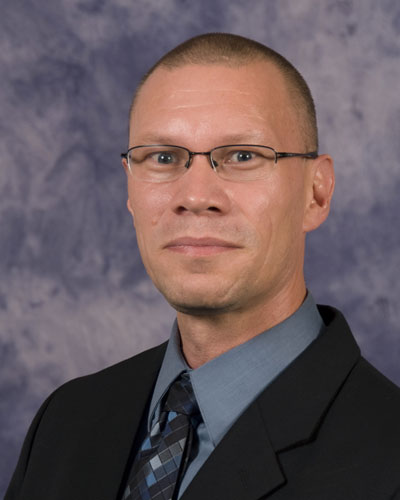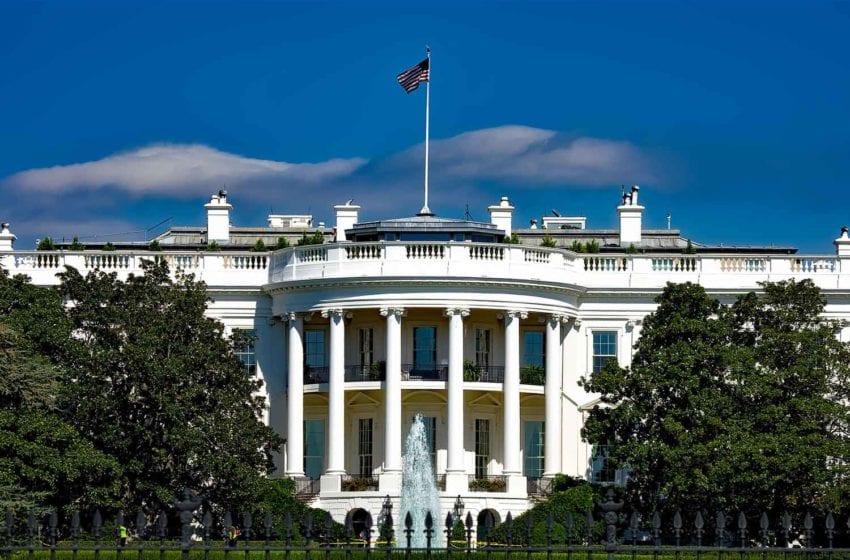
Celebrating its fifth anniversary in Cape Town, the Global Tobacco Networking Forum has firmly established itself as the venue for industry interaction.
By Taco Tuinstra
Tobacco Reporter’s Global Tobacco Networking Forum (GTNF) has grown relentlessly since its debut in 2008. After a cautious start in Rio de Janeiro, subsequent gatherings in Bangalore (2010) and Antwerp (2012) each attracted more visitors than the previous event, with an ever-greater diversity of participants and discussion topics. But the most recent GTNF, held in Cape Town, Nov. 6–8, topped them all, boasting record attendance and an unrivaled program.
The 2013 conference took place under the motto simunye, which means “we are one” in Zulu and is used to remind people that no one can operate in isolation. The concept fit seamlessly with the GTNF philosophy of bringing together people—even those who don’t always see eye to eye—to share ideas and solutions that will benefit business, customers and society at large.
Like previous GTNFs, the Cape Town event attracted senior leading tobacco executives, financial analysts and prominent health advocates, among other stakeholders, but the caliber of participants was higher than ever. The speaker list even included a two-time Nobel Peace Prize nominee (Leon Louw, executive director of the Free Market foundation, who contributed to the creation of South Africa’s post-apartheid constitution). Attendees praised the quality of the discussions, which focused on topics such as regulation, tobacco harm reduction and the never-ending fight against illicit cigarette trade.
Each morning of the event opened with a plenary session, comprising speeches and panel discussions. After lunch, delegates broke into smaller groups to discuss various topics more in-depth. In between the official sessions, participants had a chance to network in less formal settings. The idea was that this would allow them to discover shared interests and identify new opportunities—and there was evidence of that happening, with people who otherwise may not have met realizing they could help each other or do business together.
Over the past five years, the forum has clearly come into its own. Whereas in the run-up to the first GTNF, event-fatigued industry representatives required some persuading to come to Rio, tickets to the Cape Town gathering sold out a month in advance. Further validating the GTNF’s claim to be the industry’s premier discussion forum, the 2013 conference was supported—both financially and with speaker participation—by all leading cigarette manufacturers.
The decision to stage the 2013 GTNF in Africa proved well-timed, too. As Michael Lalor, lead partner at Ernst & Young’s Africa Business Center, pointed out during his keynote address, Africa has lately become the place to be for investors. The continent is home to six of the world’s 10 fastest-growing economies and is expected to continue growing in a diverse range of sectors. Contrary to popular perception, the growth has been driven not by commodities, but by domestic demand. “This is a structural transformation,” said Lalor, adding that the benefits have been trickling down to ordinary people, who enjoy higher standards of health care, education and general welfare than before. According to the World Bank, half of Africa’s countries now qualify as middle income—up from a handful in the 1990s. Governance is improving as well; more than 35 African countries now qualify as democracies—a far cry from the days when the continent was ruled almost exclusively by generals and presidents-for-live.
Of course, it wasn’t always so. In 2000, The Economist magazine famously portrayed Africa as “the hopeless continent,” lamenting its intractable civil wars, high levels of corruption and decaying infrastructure. But even as that issue hit newsstands, a turnaround was already underway. Lalor said the foundation for Africa’s takeoff was laid at the end of the Cold War, when the world’s superpowers stopped using the continent as a proxy battlefield.
Despite the gains, investors in Africa still face plenty of challenges. For starters, it is easy to underestimate the continent’s size and diversity. Africa is larger than China, the United States and Europe (excluding Russia) combined. It is home to 54 countries and an even greater number of cultures and languages. Distribution is a tremendous hurdle for anyone, including tobacco companies, hoping to do business here. (The challenges facing tobacco companies and their suppliers in Africa are vividly described in “The distribution trail,” TR August 2004” and “Out of Africa,” TR August 2008.) Those who get it right, however, like British American Tobacco South Africa, stand to reap tremendous gains.
But while Africa offers significant opportunities as an end market, it remains best known in the tobacco industry as a supplier of leaf. Charles Graham, regional director for Universal Leaf Africa, said the continent offers both skilled farmers and ideal growing conditions. Accounting for 27 percent of the world’s arable land but only 13 percent of its people, Africa produces some 600,000 tons of leaf annually, with significant volumes originating in Zimbabwe, Malawi, Mozambique and Tanzania. Unlike other big African industries such as mining, tobacco farming benefits people in rural areas. There are some 1.1 million tobacco farmers in sub-Saharan Africa, each supporting multiple dependents. And despite attempts by some to promote alternative crops, tobacco’s returns to the farmer are unrivaled. Graham was quick to point out that the tobacco industry strongly opposes monocropping, however. “We encourage our farmers to become well-rounded agro-businessmen, producing a variety of crops, including food crops,” he said.
Several speakers commented on how competitive the global market for leaf tobacco had become, with customers and governments insisting on full traceability and regulatory compliance. “The definition of quality is changing to one of total product integrity,” said Mark Kehaya, chairman of Alliance One International, who detailed his company’s initiatives to optimize its supply chain in Africa.
In addition to competitive pressures, African tobacco farmers, like others in the industry, are increasingly targeted by public health activists. In a passionate speech, François van der Merwe, chairman and CEO of the Tobacco Institute of Southern Africa (TISA) and global president of the International Tobacco Growers Association, implored the industry to face its challenges with simunye. There was a lot of unnecessary distrust within the sector, he noted—even though the legal players had many shared interests. For example, the industry should cooperate to fight illicit trade and senseless regulation. While supporting the health agenda, TISA vehemently opposes the extreme rules inspired by the World Health Organization’s (WHO) Framework Convention for Tobacco Control. Van der Merwe also insisted on the right of the industry to be included in talks about tobacco regulation, from which it is increasingly banned. But with rights come responsibilities, he noted. The industry should get its own house in order, by working toward regulatory compliance, for example. He encouraged his audience to keep their heads high in spite of the almost unbearable pressure. “Don’t apologize,” he said. “Be proud of your business.”
The theme of pride resurfaced during a breakout session on tobacco product regulation, when Louw—a self-described health puritan—questioned why the industry discourages consumers from using its products. “If you are not proud of your products, you cannot complain about what is thrown at you,” he commented. “You should encourage tobacco consumption as a perfectly legitimate choice to make.” Earlier, during the Nanny State panel discussion, Louw had argued for the “privatization of the mouth”—the freedom to decide what comes out (controversial opinions, for example) and what goes in (“tobacco smoke, fatty foods and certain other, unmentionable things”).
Views favoring personal freedom and limited government were also aired by other members of the Nanny State panel, which had a strong libertarian flavor. Jeff Stier, senior fellow at the U.S. National Center for Public Policy, argued that public health is better promoted through private-sector innovation than through government interventions, as demonstrated by the success of e-cigarettes. Simon Clark, director of the smoker lobby group Forest, lamented the U.K. public smoking ban, which fails to provide for separate smoking rooms. “A blanket ban is not about the protection of nonsmokers but about forcing consumers to change their behavior,” he protested. Clark also cautioned against unintended consequences of smoking bans, such as loneliness among old people who are now staying at home rather than going to the pub. In this vein, Mark Littlewood, director general of the London Institute of Economic Affairs, urged the industry continue fighting yesterday’s battles. “Revisit all the bad laws and regulations,” he said.
The tone was more conciliatory during the Public Policy panel discussion. Delon Human, a prominent health care consultant specializing in tobacco harm reduction, said South Africa’s bloodless transformation from apartheid to democracy held lessons for the tobacco industry and its detractors. “I believe a win-win-win is possible,” he said. Human invoked the image of two big ships—one representing the tobacco industry and the other the public health community—that had recently been joined by a smaller ship, symbolizing tobacco harm reduction and containing “a curious mix of pragmatists looking for a middle way.” But Human cautioned against reviving the tobacco wars. “Do not consider engaging in a war with public health unless you want to move back into the fruitless confrontations of the past,” he said.
Another distinguished health advocate on the panel stressed that harm reduction was about striking a balance. “We may not like intravenous drugs, but we still allow needle exchanges,” he observed, adding that harm reduction initiatives relating to tobacco have had a harder time gaining acceptance among health advocates because the industry had not been truthful in the past. The suspicion in the public health community runs deep, he said—to the extent that Gro Brundlandt believed her phone to be tapped by the industry while she was director general of the WHO. “It’s a big step for us to be seen in the same room with the tobacco industry,” he said.
During the question-and-answer session, Van der Merwe brought up a point that had been on many tobacco representatives’ minds. The industry has changed, he pointed out to the health advocates on the panel. “We want to engage—but in practice, the door is closed. What is the first step to opening the door?”
Panel member Kgosi Letlape, president of the Africa Medical Association, replied that the tobacco industry has no right to play victim, given its past behavior. But he suggested the industry stake its demand to participate in the discussions on universal legal principals. “You are a legitimate stakeholder,” he said, acknowledging that the tobacco industry generates employment and raises tax revenues. “Tell the regulators, ‘you don’t have to like me, but you must talk with me.’”
The conference also offered a good opportunity to reflect on the rise of e-cigarettes, which present both a challenge and an opportunity to the tobacco industry. Displaying a slide depicting a typewriter, one GTNF speaker urged his listeners to rethink their business. To most in the audience the picture was just that—a typewriter. When shown to a group of young people who had grown up in the Internet age, however, the machine apparently elicited an entirely different response: “Cool—a laptop with a built-in printer that doesn’t need to be plugged in!”
Rather than simply manufacturing smoking products, one could argue that tobacco companies are in the business of mood modification. Seen from this perspective, cigarette manufacturers compete not only with other tobacco firms, but also with, say, producers of energy drinks. The industry also would do well to take notice of the changing attitudes toward ownership. Young people increasingly rent or subscribe, rather than own. Many features that previously required hardware are increasingly downloadable, a development that extends beyond smartphone applications.
With the advent of e-cigarettes, competition will be increasingly about nicotine delivery rather than tobacco smoke. Nicotine remains a widely misunderstood drug, however, and David O’Reilly, British American Tobacco’s scientific director, took advantage of the GTNF to help set the record straight. O’Reilly called nicotine “an important cultural drug” because of its unique ability to relax and stimulate simultaneously. Throughout the day, there are many consumption moments. “It brings you up after lunch, and down post coitus,” he quipped. It also offers therapeutic properties such as improved cognition and weight control.
While nicotine is not without risks, at the level normally used in humans it is considered to be safe. According to O’Reilly, the lethal dose of nicotine is 60 mg, but 1 mg-2 mg is enough to supply the “hit” that smokers crave. What’s more, the body tells the user when he needs to stop (by giving him a headache for example). Unlike “tar,” nicotine does not cause cancer or serious cardiovascular problems. But it does raise a person’s heart rate and blood pressure.
While the idea of an e-cigarette has been around since the 1960s, it is only recently that the product has started catching on commercially—a classic case of the pioneers getting killed and the settlers taking the land, said O’Reilly.
The trick, going forward, he said, will be reasonable regulation—regulation that will encourage good manufacturing and marketing practices without restricting innovation. Like Human, O’Reilly cautioned against belligerency. “We will not renormalize nicotine by going to war with the WHO. To be successful, the WHO needs to be part of this development,” he said.
O’Reilly’s presentation concluded the official part of the GTNF, but the organizers still had a surprise in store for the delegates: a performer who embodied not only the agility, speed and determination that many in the industry aspire to, but also the fragility of a species under threat—a condition that many in the tobacco business can relate to. Under dead silence—the audience had been asked to refrain from clapping so as to not unsettle their intrinsically shy guest—volunteers from Cheetah Outreach escorted one of their big cats to the podium.
Based near Cape Town, Cheetah Outreach’s goal is to raise awareness of the plight of the cheetah and to campaign for its survival. After explaining their work and fielding questions about their loudly purring companion the handlers invited the audience to the podium for group pictures.
Photographers jostled for position, competing for the best angles. Flashes fired and light transformed into pixels. And when the cameramen checked their LCD displays, they saw tobacco executives, free-market advocates and public health officials standing side by side, flanked by a majestic African cat. If there were ever an image that captured the simunye spirit that prevailed during the Cape Town GTNF, this would be it.
Editor’s note: This report was compiled in compliance with the Chatham House rules that governed the GTNF. All people mentioned provided permission to be quoted in Tobacco Reporter.













